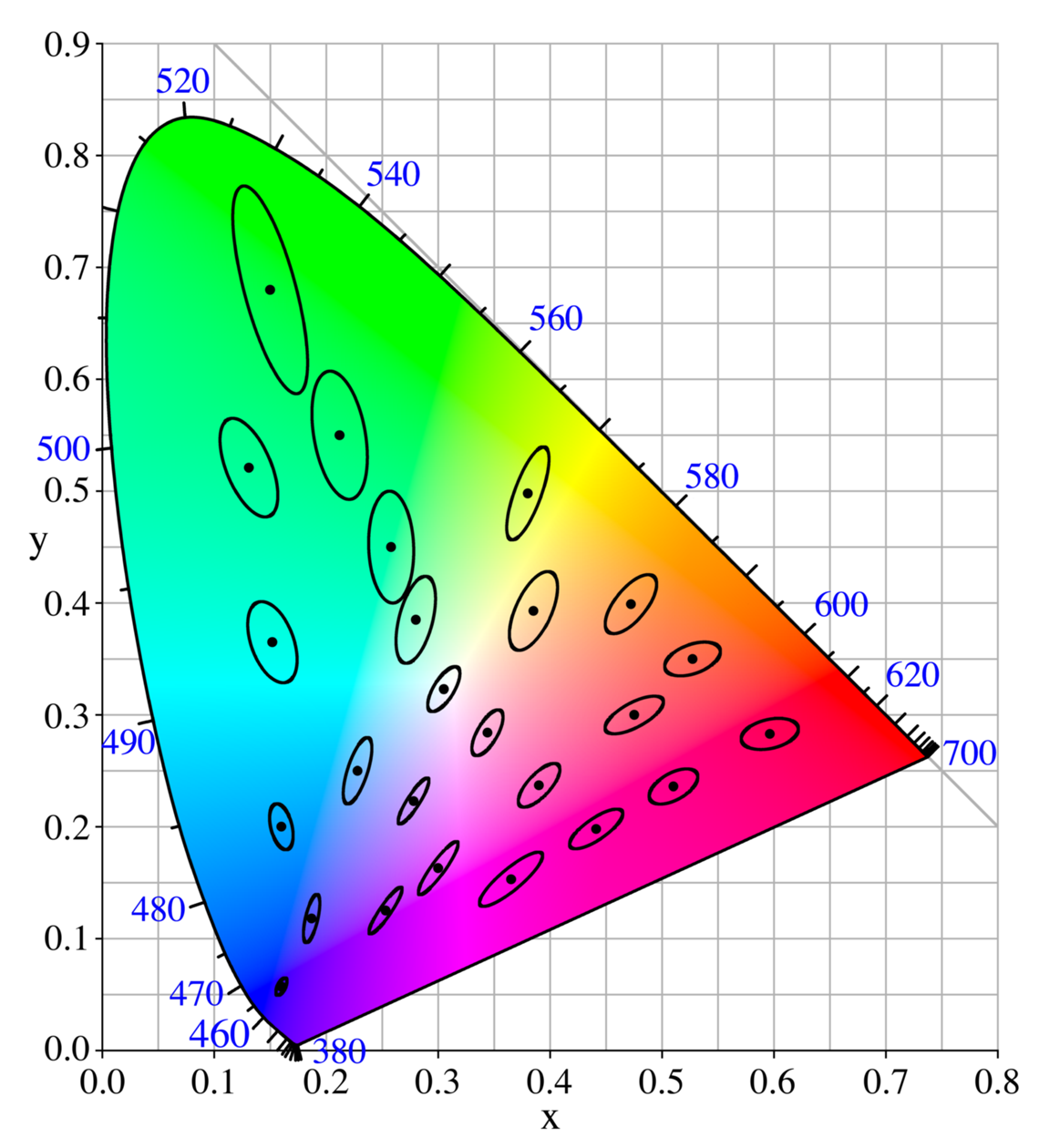
SDCM is an acronym of Standard Deviation Colour Matching, a unit of measurement for color consistency in lighting. SDCM is a statistical measure used in lighting technology to describe how closely the colors of different light sources match each other. SDCM is represented as steps or “MacAdam ellipses” on the CIE 1931 chromaticity diagram, showing the range within which differences in color are indistinguishable to the human eye. A lower SDCM value means better color consistency, with an SDCM of 1 generally considered indistinguishable, while higher values indicate more noticeable color differences.
SDCM is a crucial parameter for LEDs and lighting fixtures, as multiple light sources installed side by side should appear uniform in color. For most indoor environments, an SDCM of 2-3 is desirable for good consistency, while up to 5 SDCM may be acceptable in some outdoor applications. High-quality LED products strive for a low SDCM to ensure color uniformity across batches.
| SDCM Steps | Perception |
|---|---|
| 1 | No visible difference |
| 2–3 | Slight to somewhat visible difference |
| 4+ | Visible to strong difference |
SDCM essentially ensures that light from multiple sources looks consistent, which is critical for aesthetic and functional lighting designs.
Exit Mobile VersionThe Illuminating Engineering Society (IES) created the LM80 standard to quantify lumen maintenance and color…
Unlike traditional motion sensors, SpaceSense detects movement in a room using Wi-Fi signals provided by…
Thread is a networking protocol specifically designed for the Internet of Things (IoT) that offers…
Matter is a new standard for smart home devices, aiming to simplify connectivity and interoperability.…
A communication protocol is a system of rules that allow two or more entities to…
This website uses cookies.